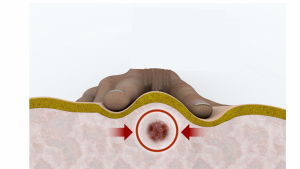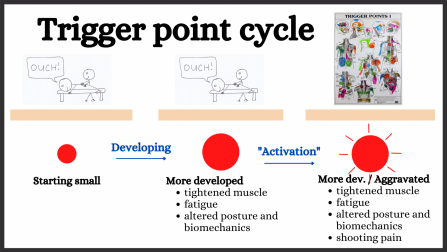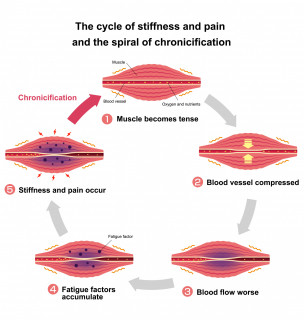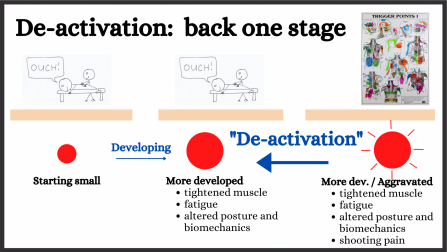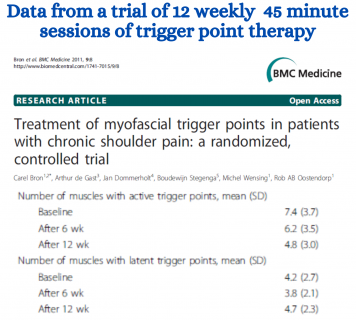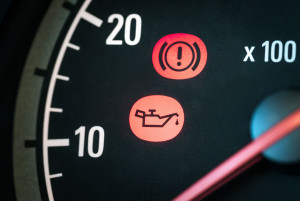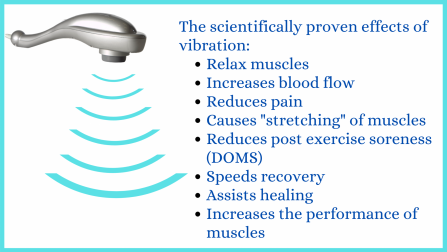Do trigger points still cause problems even when not referring pain
part from being just one step from referring pain again, muscles with trigger points become tight, lack blood flow, and are not able to function normally, which adversely effects posture and biomechanics. Even without referring pain, the consequences of these (known as latent trigger points) have been summed up as follows (7, 13). For more information please see our article Trigger point basics
- restrict ranges of motion
- cause muscle weakness
- cause muscle fatigue
- alter muscle activations (alter neurological control of movement)
- induce muscle cramps, and
- affect posture and joint function, creating further issues.
On top of that, scientists are now finding that latent trigger points still produce sub-threshold levels of pain that over time sensitises the nervous system. This is a major cause of issues such as fibromyalgia and migraines.(12)
